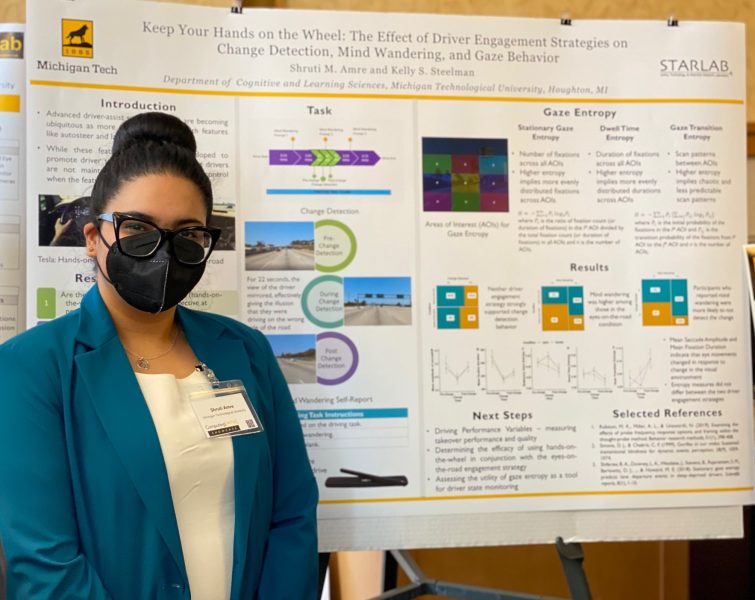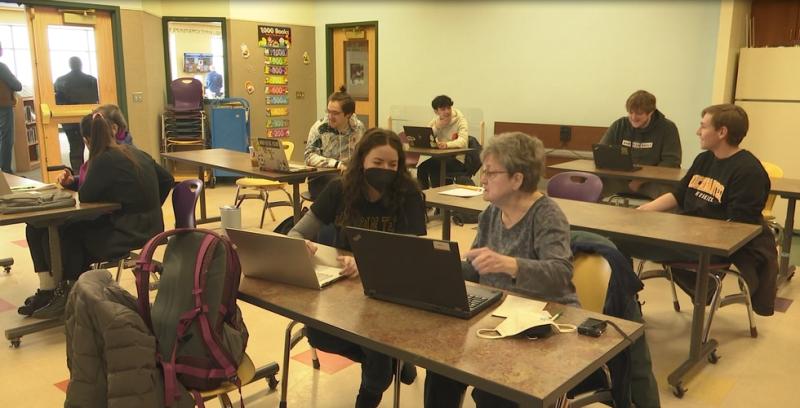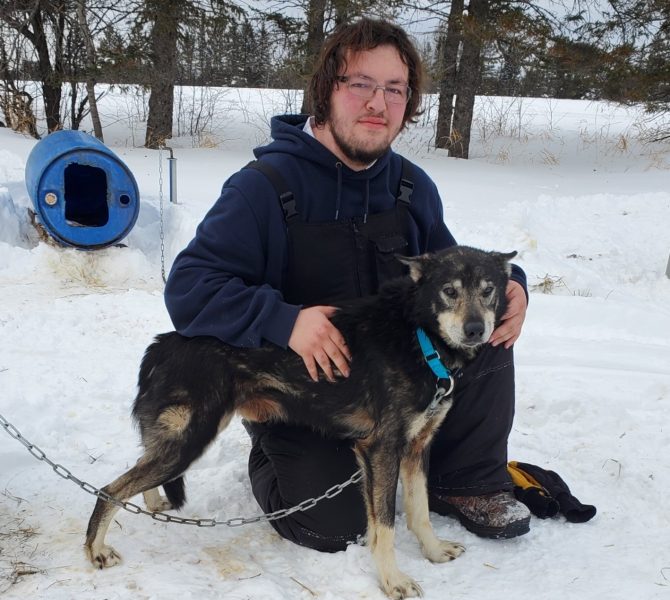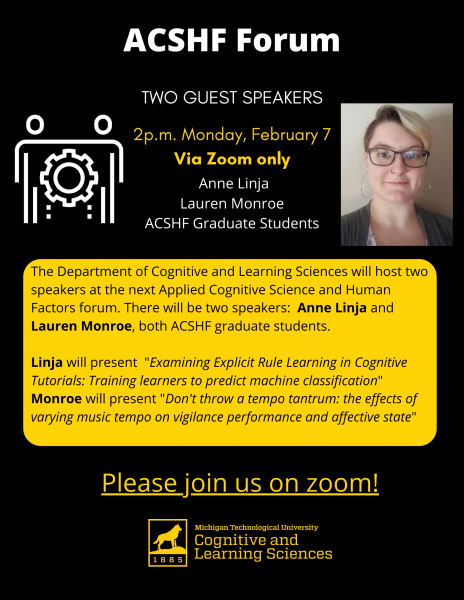Michigan Tech’s College of Computing and the Institute of Computing and Cybersystems (ICC) co-hosted the first Computing[MTU] Showcase on April 4-6, 2022. Organizers say the showcase was intended to be a connection-maker on many levels, including undergraduate and graduate students presenting their most exciting innovations and current research.
The Department of Cognitive and Learning Sciences (CLS) was proud to have nine of the 40 entries in the Showcase’s research poster competition come from CLS students. With “Best Poster” going to Shruti Amre, ACSHF PhD student, for “Keep your hands on the wheel: the effect of driver engagement strategy on change detection, mind wandering, and gaze behavior”. Shruti is advised by Dr. Kelly Steelman.
A few details on the research
Advanced driver-assist systems (ADAS) have revolutionized traditional driving by enabling drivers to relinquish operational control of the vehicle to automation for part of the total drive. These features only work under certain pre-defined conditions and require drivers to be attentive of their surroundings. While the features are engaged, there is an increased risk associated with drivers losing awareness of their environment. Popular manufacturers like Tesla requires drivers to have their hands-on-the-wheel while Cadillac’s ADAS requires drivers to keep their eyes-on-the road. We utilized a low-fidelity simulation and eye tracking to examine the effects of hands-on-the wheel and eyes-on-the road driver engagement strategies on change detection, mind wandering, and gaze behavior in a semi-autonomous driving task.
The showcase also hosted more than 20 speakers, including counterterrorism, health informatics, machine learning and security experts from companies and institutions ranging from Adobe, Amazon and Microsoft to the National Counterterrorism Center, the National Science Foundation and the U.S. Department of Defense.














